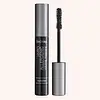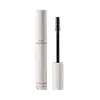What's inside
What's inside
 Key Ingredients
Key Ingredients

No key ingredients
 Benefits
Benefits

 Concerns
Concerns

No concerns
 Ingredients Side-by-side
Ingredients Side-by-side

Water
Skin ConditioningAcrylates/Ethylhexyl Acrylate Copolymer
Synthetic Beeswax
Emulsion StabilisingGlycerin
HumectantGlyceryl Stearate
EmollientSynthetic Wax
AbrasiveLactobacillus Ferment
Skin ConditioningHydrogenated Olive Oil Stearyl Esters
Emulsion StabilisingPotassium Cetyl Phosphate
EmulsifyingCopernicia Cerifera Cera
EmollientPropanediol
SolventTribehenin
EmollientXanthan Gum
EmulsifyingSodium Dehydroacetate
PreservativeHydroxyethylcellulose
Emulsion Stabilising1,2-Hexanediol
Skin ConditioningCaprylyl Glycol
EmollientSodium Hydroxide
BufferingLaureth-21
CleansingDisodium Phosphate
BufferingPolysorbate 60
EmulsifyingSodium Phosphate
BufferingCI 77499
Cosmetic ColorantWater, Acrylates/Ethylhexyl Acrylate Copolymer, Synthetic Beeswax, Glycerin, Glyceryl Stearate, Synthetic Wax, Lactobacillus Ferment, Hydrogenated Olive Oil Stearyl Esters, Potassium Cetyl Phosphate, Copernicia Cerifera Cera, Propanediol, Tribehenin, Xanthan Gum, Sodium Dehydroacetate, Hydroxyethylcellulose, 1,2-Hexanediol, Caprylyl Glycol, Sodium Hydroxide, Laureth-21, Disodium Phosphate, Polysorbate 60, Sodium Phosphate, CI 77499
Water
Skin ConditioningHydrogenated Olive Oil Stearyl Esters
Emulsion StabilisingAcrylates/Ethylhexyl Acrylate Copolymer
Glyceryl Stearate
EmollientAcacia Senegal Gum
MaskingButylene Glycol
HumectantOryza Sativa Bran Wax
Skin ConditioningMethylpropanediol
SolventPotassium Cetyl Phosphate
EmulsifyingCopernicia Cerifera Cera
EmollientHelianthus Annuus Seed Wax
Skin ConditioningPCA Glyceryl Oleate
EmollientVp/Eicosene Copolymer
Caprylyl Glycol
EmollientSodium Dehydroacetate
PreservativePotassium Sorbate
PreservativeXanthan Gum
EmulsifyingAminomethyl Propanol
BufferingPhenylpropanol
MaskingLaureth-21
CleansingIron Oxides
CI 77491
Cosmetic ColorantCI 77492
Cosmetic ColorantCI 77499
Cosmetic ColorantWater, Hydrogenated Olive Oil Stearyl Esters, Acrylates/Ethylhexyl Acrylate Copolymer, Glyceryl Stearate, Acacia Senegal Gum, Butylene Glycol, Oryza Sativa Bran Wax, Methylpropanediol, Potassium Cetyl Phosphate, Copernicia Cerifera Cera, Helianthus Annuus Seed Wax, PCA Glyceryl Oleate, Vp/Eicosene Copolymer, Caprylyl Glycol, Sodium Dehydroacetate, Potassium Sorbate, Xanthan Gum, Aminomethyl Propanol, Phenylpropanol, Laureth-21, Iron Oxides, CI 77491, CI 77492, CI 77499
Ingredients Explained
These ingredients are found in both products.
Ingredients higher up in an ingredient list are typically present in a larger amount.
We don't have a description for Acrylates/Ethylhexyl Acrylate Copolymer yet.
Caprylyl Glycol is a humectant and emollient, meaning it attracts and preserves moisture.
It is a common ingredient in many products, especially those designed to hydrate skin. The primary benefits are retaining moisture, skin softening, and promoting a healthy skin barrier.
Though Caprylyl Glycol is an alcohol derived from fatty acids, it is not the kind that can dry out skin.
This ingredient is also used as a preservative to extend the life of products. It has slight antimicrobial properties.
Learn more about Caprylyl GlycolCi 77499 is also hydrated iron III oxide. It is created from mixing red and black iron oxides. This helps give shades of darkness to a product.
Iron III oxides are classified as inorganic chemicals for coloring.
This ingredient comes from a palm tree native to Brazil. This ingredient is used to thicken texture and leaves behind a film when applied.
Glyceryl Stearate is a mix of glycerin and stearic acid.
It is used to stabilize the mixing of water and oil ingredients. By preventing these ingredients from separating, it can help elongate shelf life. It can also help thicken the product's texture.
As an emollient, it helps soften skin and supports barrier-replenishing ingredients.
In cosmetics, Glyceryl Stearate is often made from vegetable oils or synthetically produced.
This ingredient may not be fungal-acne safe
Fun fact: The human body also creates Glyceryl Stearate naturally.
Learn more about Glyceryl StearateHydrogenated Olive Oil Stearyl Esters is an oil.
We don't have a description for Laureth-21 yet.
Potassium Cetyl Phosphate is the potassium salt of a mixture. This mixture consists of the esters from phosphoricacid and cetyl alcohol.
Potassium Cetyl Phosphate is an emulsifier and cleansing agent. Emulsifiers help stabilize a product. It does this by preventing certain ingredients from separating.
As a cleansing agent, Potassium Cetyl Phosphate helps gather oils, dirts, and pollutants from your skin. This makes it easier to rinse them away with water.
Learn more about Potassium Cetyl PhosphateThis ingredient is a preservative with antimicrobial properties. It is the sodium salt of dehydroacetic acid.
It is especially effective at preventing bacterial and fungal growth in low concentrations.
Water. It's the most common cosmetic ingredient of all. You'll usually see it at the top of ingredient lists, meaning that it makes up the largest part of the product.
So why is it so popular? Water most often acts as a solvent - this means that it helps dissolve other ingredients into the formulation.
You'll also recognize water as that liquid we all need to stay alive. If you see this, drink a glass of water. Stay hydrated!
Learn more about WaterXanthan gum is used as a stabilizer and thickener within cosmetic products. It helps give products a sticky, thick feeling - preventing them from being too runny.
On the technical side of things, xanthan gum is a polysaccharide - a combination consisting of multiple sugar molecules bonded together.
Xanthan gum is a pretty common and great ingredient. It is a natural, non-toxic, non-irritating ingredient that is also commonly used in food products.
Learn more about Xanthan Gum